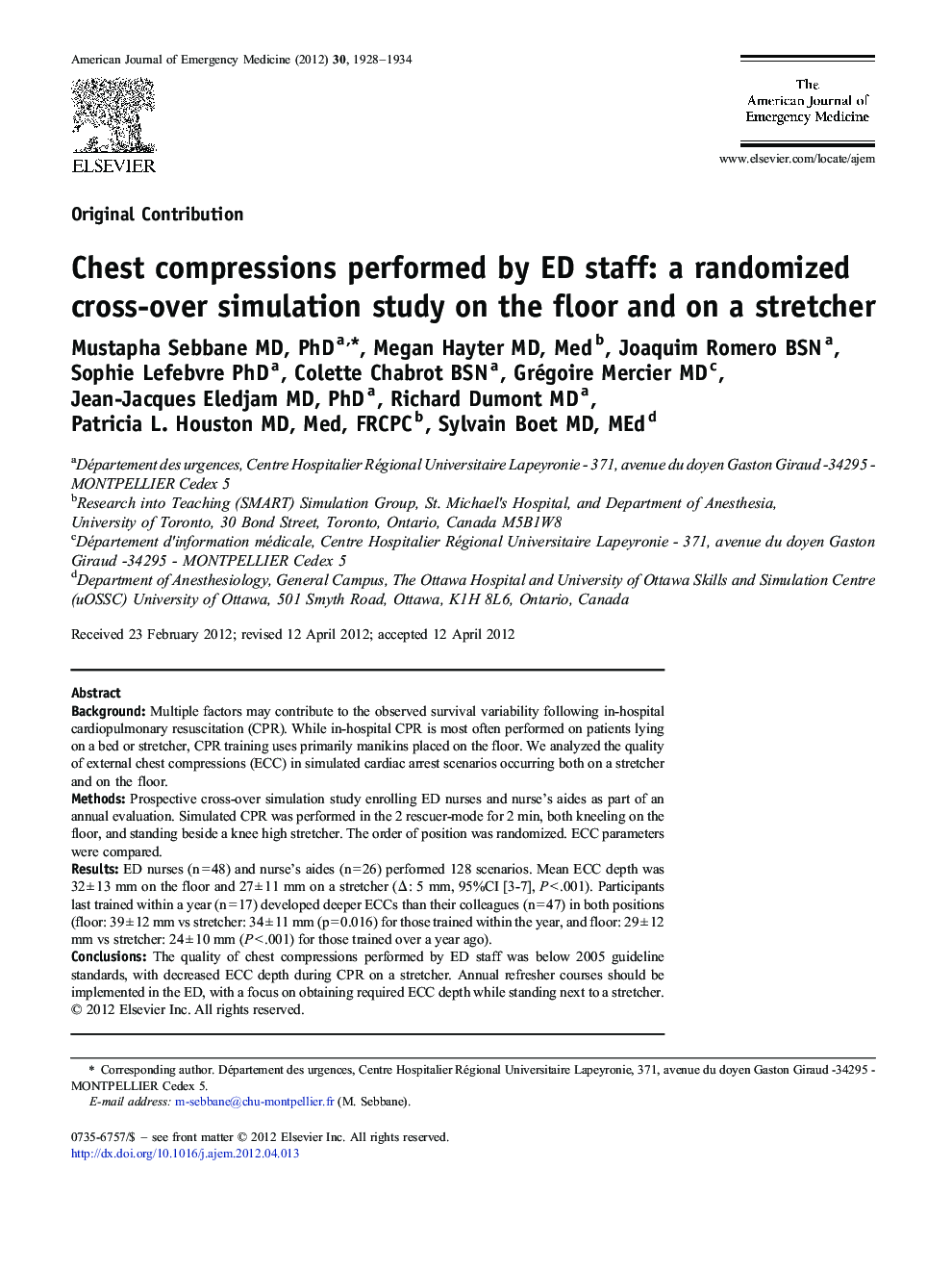| Article ID | Journal | Published Year | Pages | File Type |
|---|---|---|---|---|
| 3224915 | The American Journal of Emergency Medicine | 2012 | 7 Pages |
BackgroundMultiple factors may contribute to the observed survival variability following in-hospital cardiopulmonary resuscitation (CPR). While in-hospital CPR is most often performed on patients lying on a bed or stretcher, CPR training uses primarily manikins placed on the floor. We analyzed the quality of external chest compressions (ECC) in simulated cardiac arrest scenarios occurring both on a stretcher and on the floor.MethodsProspective cross-over simulation study enrolling ED nurses and nurse's aides as part of an annual evaluation. Simulated CPR was performed in the 2 rescuer-mode for 2 min, both kneeling on the floor, and standing beside a knee high stretcher. The order of position was randomized. ECC parameters were compared.ResultsED nurses (n = 48) and nurse's aides (n = 26) performed 128 scenarios. Mean ECC depth was 32 ± 13 mm on the floor and 27 ± 11 mm on a stretcher (∆: 5 mm, 95%CI [3-7], P < .001). Participants last trained within a year (n = 17) developed deeper ECCs than their colleagues (n = 47) in both positions (floor: 39 ± 12 mm vs stretcher: 34 ± 11 mm (p = 0.016) for those trained within the year, and floor: 29 ± 12 mm vs stretcher: 24 ± 10 mm (P < .001) for those trained over a year ago).ConclusionsThe quality of chest compressions performed by ED staff was below 2005 guideline standards, with decreased ECC depth during CPR on a stretcher. Annual refresher courses should be implemented in the ED, with a focus on obtaining required ECC depth while standing next to a stretcher.
